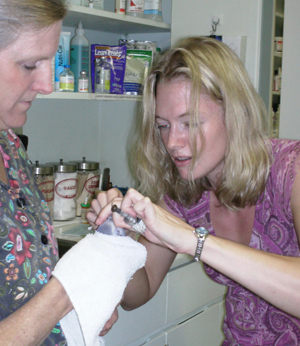Signs of Possible / Potential Illness in an African Grey

There are early warning signs that your grey might be becoming ill. Below are some possible / potential illness signs in an African Grey. These helpful tips are informational only and are indications of a potential or possible illness.
Any doubt in your mind, contact your avian veterinarian immediately. They are there to assist you in the care and health of your bird.
- Activity – sudden listlessness; sleeping when it normally does not; being quiet when it normally isn't; decreased or not eating and/or drinking.
- Droppings ("poop") - any observable change in urates (white part) or feces lasting more than a day or two.
- Diarrhea - shows up as undigested food, droppings that don't have the three distinct parts (green/brown, white and liquid urine), and weight loss. If you think your grey has diarrhea, contact your vet immediately.
- Weight loss - your bird feels "light" when you pick it up, keel bone becomes more prominent
- Feathers – abnormal looking feathers including things such as a prolonged molt or continuous presence of pinfeathers; unusual or dull color; broken, bent, picked or chewed feathers; fluffed up feathers all the time.
- Sneezing – our bird makes the noise of a "sneeze" and imitates the different sneeze from each person in the house – what you're looking for is "their" sneeze with a possible discharge. Look for stained feathers over the nares or around the face or vent and / or crusty material in or around the nostrils.
- Regurgitating / Vomiting – greys and all birds regurgitate as a sign of "affection" – you're looking for long periods of time which could indicate a crop infection
- Respiratory – signs of respiratory distress can include tail bobbing up and down with each breath and a change in breathing sounds, wheezing or clicking noise when it inhales.
- Balance – falling off its perch and huddling at the bottom of cage
- Eyes – appear dull and / or squinting; redness, swelling or loss of feathers around the eyes.
- Feet – scaly, flakiness, baldness or sores on the bottom of the feet
- Head – excessive head bobbing and shaking
